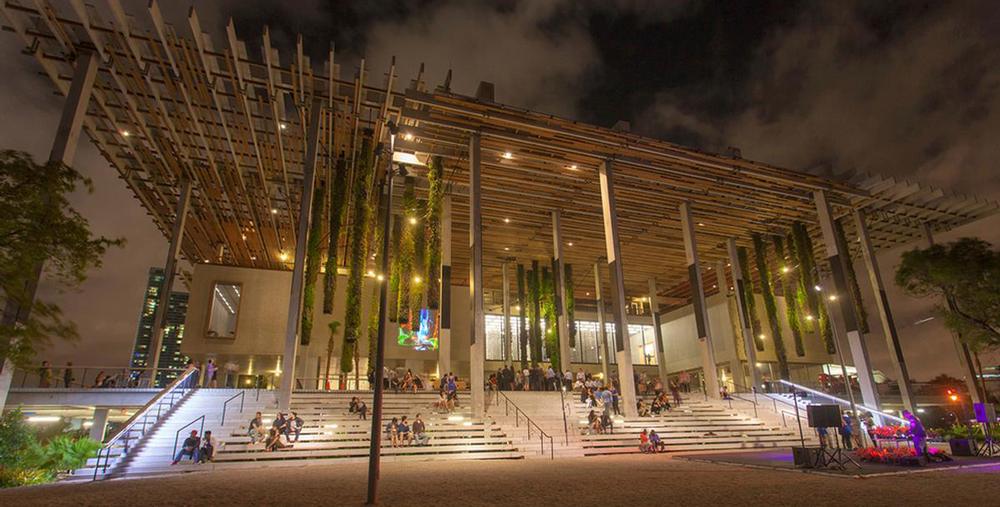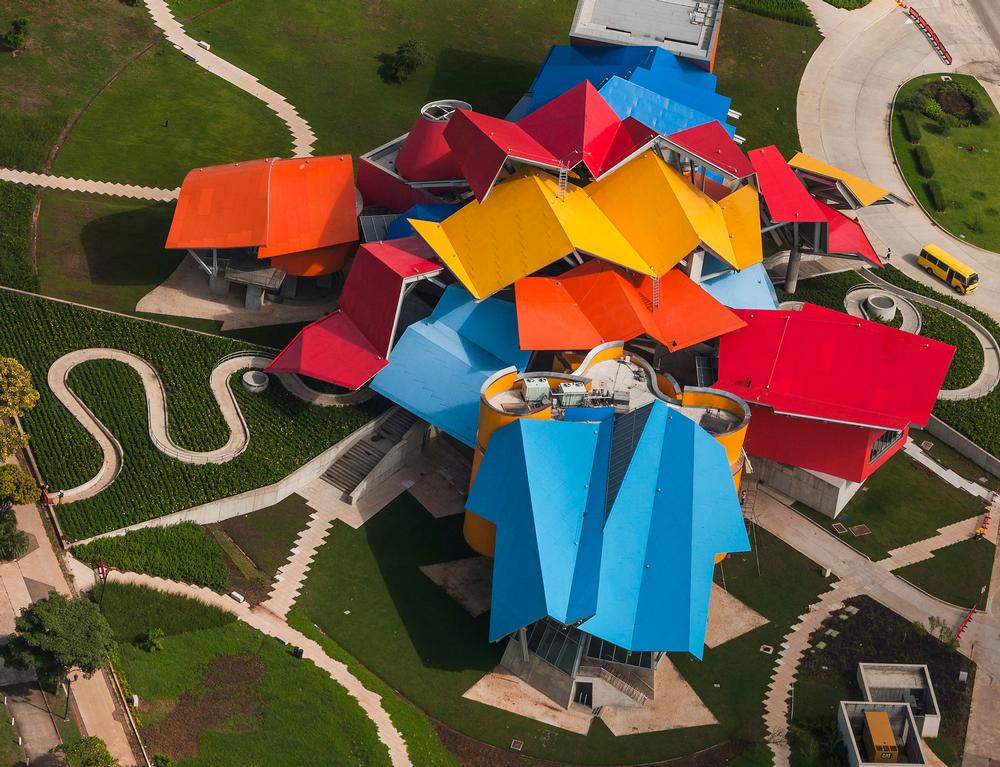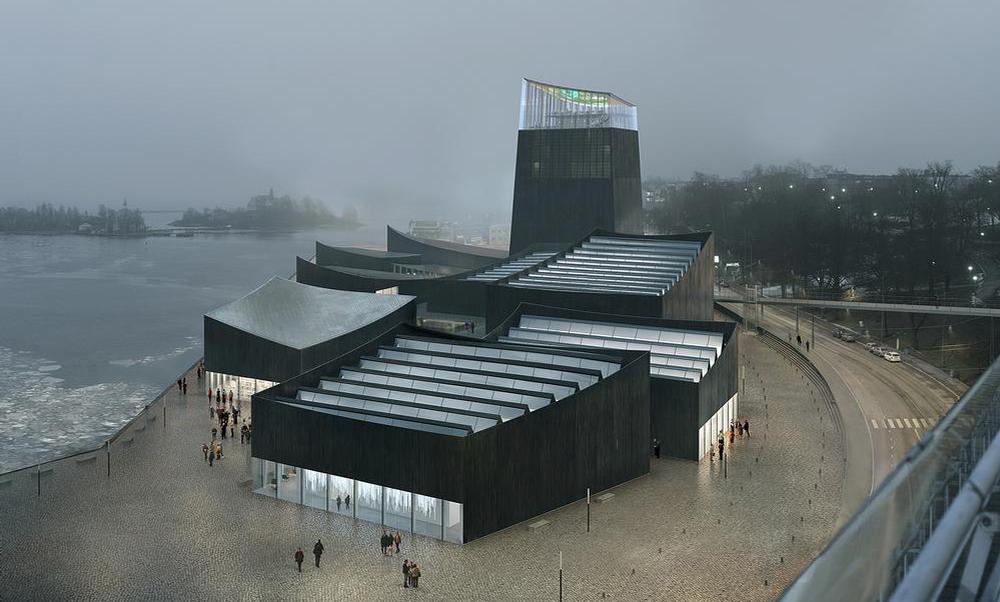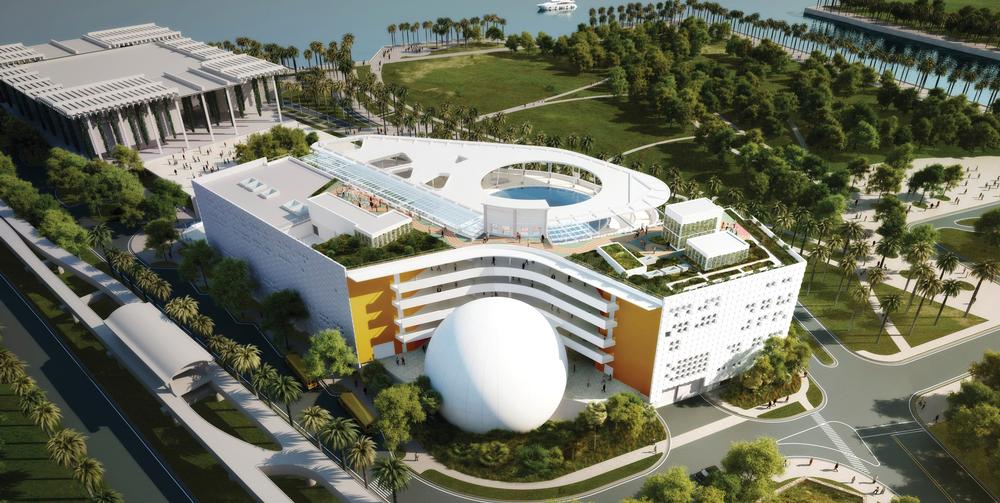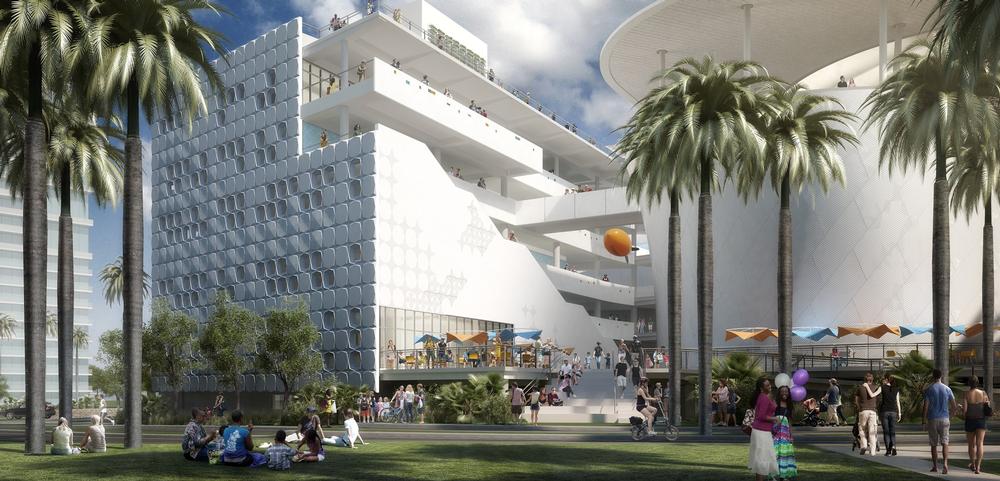features
Hail & High water
As the world’s climate changes and sea levels rise, how are museums and galleries ensuring their collections are safe, no matter what the environment throws at them? Kath Hudson reports
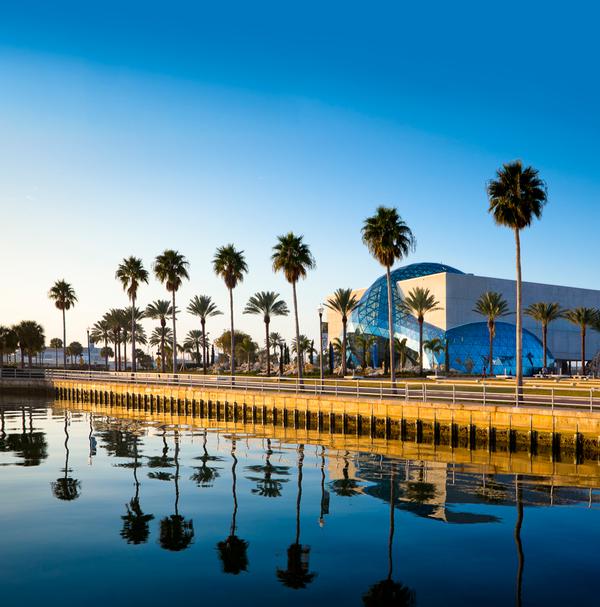
“To safeguard the artistic, historic and scientific resources they hold in trust for the public, museums need to adapt to a world where change – and water – are the new normal,” says the TrendsWatch 2015 report on Coastal Endangerment. It estimates that around nine per cent of US museums are vulnerable to climate change and rising seas, which could start to claim land in the next century.
Humans have always been drawn to settling by water, but rising seas, flooding and violent storms now mean new considerations are needed for designing waterfront institutions which are responsible for safeguarding precious public collections. As the environment changes, will it mean an end to waterfront museums?
HURRICANE-PROOFING
Miami is one of the most vulnerable US cites to both landfalling hurricanes and severe damage from rising sea levels. This isn’t stopping world-class facilities from being built there, but the rule book is being rewritten.
The Pérez Art Museum opened on the Miami shoreline in 2013. Designed by Herzog & de Meuron, it boasts some of the largest hurricane-resistant panes ever installed and is sited on a hurricane-resistant platform.
The Patricia & Phillip Frost Museum of Science will also soon open its doors in Miami. “To make it hurricane proof, Code and FEMA-mandated regulations were exceeded, and wind tunnel tests were conducted, to give precise envelope pressures to design façades and roofs,” explains its designer, Christian Hoenigschmid of Grimshaw Architects.
The plaza and main entry level was set several feet above the historical storm surge of Hurricane Andrew (1992) and enclosed spaces below that level are constructed as a watertight ‘bathtub’ with all openings fully sealable.
The Dalí Museum in St Petersburg, Florida, designed by HOK, was also built to protect its priceless art collection from hurricane-force winds and water. A 12-inch thick, solid concrete roof and cast-in-place 18-inch reinforced concrete walls are designed to withstand the 165mph wind loads of a Category 5 hurricane.
Located above the flood plane on the third floor, the art is protected from a 30ft-high hurricane storm surge by storm doors which shield the vault and galleries. “Specially developed for this project, the triangulated glass panels are 1.5 inches thick, insulated and laminated, and were tested to resist the 135mph winds, driven rain and missile impacts of a Category 3 hurricane,” says Anica Landreneau, director of sustainable consulting at HOK.
SITING
Hurricanes don’t have to be taken into consideration in all new builds, but rising sea levels are raising questions about the positioning of waterfront projects. The TrendsWatch report even speculates whether museums will cease to be built next to water for much longer, or whether construction spend should be limited, in case these structures have to be abandoned in the future.
Siting was given particular attention during the design of Biomuseo, located at the tip of the Amador Peninsula, between the Bay of Panama and the Panama Canal. “Being pretty much at sea level and in a country with eight months of heavy rain per year, drainage and storm water managements were crucial for the site design,” says curator, Darien Montanez. “The topography of the lot was modified so the building now sits atop a low hill that’s well above sea level. The main floor is at a 6.5m elevation and even our lowest basements are at 4m.”
The architects of Helsinki Guggenheim also had to think carefully about where to position the waterfront museum. “Knowing the ocean level is going to rise in the coming decades, we set the project ground level 1m higher than the street level,” says the architect, Hiroko Kusunoki of Moreau Kusunoki Architectes. “With the potential risk of rising seawater levels, we set all art storages 1m higher than the city level. Furthermore, we avoided any basement to limit the risk of leakage, and removed any use of pumps to optimise the electricity consumption.”
SUSTAINABILITY
All architects are now considering sustainability when designing museums and galleries, whether new build or centuries old – not only to keep carbon emissions and running costs down, but because of their new role as educators.
Grimshaw says of the Frost Museum of Science: “Given that it’s an institution which acknowledges, teaches and exhibits on climate change, there was a general goal to create a very sustainable building with low energy and water consumption, to lead by example and raise awareness in the community.”
Róisín Heneghan, co-founder of heneghan peng architects, which also designs museums and galleries worldwide, agrees that climate change is becoming a big issue with their clients: “We’re having a lot of discussions with curators about relaxing environmental controls: allowing museums to be slightly cooler in the winter and warmer in summer, as well as creating buffer zones with doors, so less energy is used from the mechanical plant, which cuts down on running costs and carbon emissions.”
Biomuseo, designed by Frank Gehry, uses passive cooling and ventilation as much as possible, with the two largest public spaces open to the elements. The other galleries require air conditioning and humidity controls, but the walls and glass surfaces are insulated to make the air conditioning run more efficiently by eliminating heat irradiation into the spaces. Also, all entries and exits have vestibules with double doors to minimise the loss of conditioned air.
“We’re constantly maintaining the balance of our AC system to minimise the consumption of electricity,” says Montanez. “Also, we’re now using the condensation from our AC systems to water our park, which is especially important in this El Niño year.”
LIGHTING & MATERIALS
Architect Heneghan adds that five years ago curators didn’t want LED lighting in galleries, but now that the technology and colour rendition has improved, they’re much more amenable to this, as well as using natural daylight. Commenting on this new trend, Montanez, curator of Biomuseo, says: “Our galleries have been designed to allow plenty of natural light in and this is only supplemented with artificial lights when needed. We’ve also been phasing out incandescent fixtures in favour of LEDs and fluorescent and we don’t illuminate the building at night.”
Moreau Kusunoki Architectes gave materials careful consideration when designing Helsinki Guggenheim, not only to use sustainable, local materials, but also because wood can store carbon dioxide. “The façade is made of wood,” says Kusunoki. “Wood is largely available in Finland and relatively close to the site. Timber is also an efficient carbon sink.”
INVEST TO SAVE
Anica Landreneau, director of sustainable consulting at HOK, says that with rising temperatures museums will need to increase their HVAC system sizing to accommodate additional dehumidification and cooling loads, particularly in warm countries: “Facilities should anticipate rising utility costs and plan annual operating budgets accordingly. They may also want to update lighting or ageing HVAC systems to start saving energy now and invest in energy efficiency and renewable energy systems.”
Landreneau also recommends that museums should move storage archives from the basement to above ground, install floodgates and have generators on stand by for power outages: “Tropical Storm Allison and Hurricanes Katrina and Sandy saw many facilities lose power because generators were located below ground. Museums should look to reduce water consumption and seek reclamation opportunities like condensate or rainwater harvesting, as growing water scarcity issues may impact water prices”.
Heneghan says many museums are nervous about having basement archive storage or technology related to security systems. Some use offsite storage, and most digitalise collections. When finished, the Dalí Museum’s digital archive will safeguard its collection while providing access to virtual visitors.
THE FUTURE
Rather than rethinking locations for new museums and galleries, we must consider increased protection and resilience. As well as safeguarding collections and decreasing carbon output, the next step is for these institutions to use their platform to educate the public about sustainability and climate change. ?
About the author

Kath Hudson is a contributing editor of Attractions Management and other Leisure Media magazines.
seventhwavedesign.com
